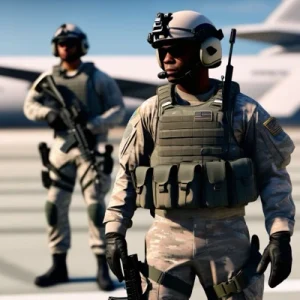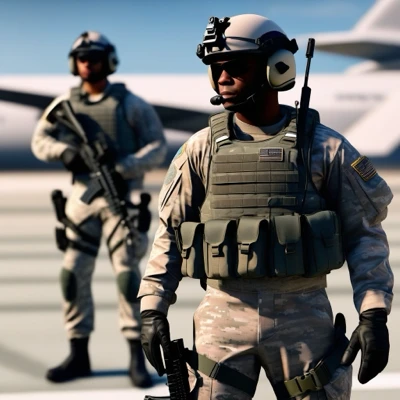What Counts as Sexual Harassment in the Military? | UCMJ vs. EO Complaints (Complete Guide)
Gonzalez & Waddington, Attorneys at Law represent service members worldwide in sexual harassment investigations, UCMJ prosecutions, administrative actions, and EO (Equal Opportunity) complaints. If you’ve been accused or you’re considering a report, you need to understand the two parallel systems in the military: (1) criminal/disciplinary UCMJ and (2) administrative EO. This guide explains what “sexual harassment” typically means in the armed forces, how UCMJ and EO pathways differ, what evidence matters, and how to protect your rights in either process.
Sexual Harassment: Core Concepts the Services Look At
- Unwelcome conduct of a sexual nature (comments, jokes, innuendo, propositions, images, gestures, messages).
- Quid pro quo: Workplace or training benefit is conditioned on sexual conduct—or threats of adverse action for refusing.
- Hostile environment: Severe or pervasive conduct that a reasonable person would find intimidating, hostile, or offensive, and that actually interferes with work, performance, or wellbeing.
- Digital conduct counts: DMs, texts, group chats, memes, emojis, and social media interactions can all be evidence—on-duty or off-duty when impacting the unit.
- Context matters: Rank disparity, repetition, audience, location, duty relationship, prior boundaries, and whether the conduct stopped when told.
Note: Exact definitions and elements come from DoD and Service regulations and the current UCMJ/Manual for Courts-Martial. Commands apply a reasonable person lens plus the impact on the complainant and the unit.

Two Tracks: UCMJ (Criminal/Disciplinary) vs. EO (Administrative)
1) UCMJ Path (Criminal/Disciplinary)
- Goal: Determine whether a punishable UCMJ offense occurred (sexual harassment can be charged under specific provisions or as other misconduct depending on facts).
- Investigators: CID/OSI/NCIS/CGIS or command-directed investigations; potential preferral of charges, NJP/Article 15, or court-martial.
- Standard of proof: Beyond a reasonable doubt at court-martial; due process rights attach (counsel, motions, rules of evidence).
- Outcomes: Acquittal, conviction (punitive discharge, reduction, confinement), or nonjudicial punishment/adverse admin actions.
2) EO Path (Administrative Equal Opportunity)
- Goal: Assess policy violation and workplace climate; stop misconduct; restore good order and discipline.
- Process: Informal or formal EO complaint; interviews, document reviews, command findings and corrective actions.
- Standard of proof: Typically preponderance of evidence (“more likely than not”), not criminal proof.
- Outcomes: Training, counseling, no-contact orders, reassignment, letters of reprimand, adverse evaluations, or board actions. No criminal conviction results from EO alone.
Key insight: The same facts can trigger both tracks. EO is not a shield from UCMJ, and a UCMJ result doesn’t automatically end EO actions. Evidence you create in one track can be used in the other—get counsel early.
Common Fact Patterns (and How Commands See Them)
- Repeated sexual comments/DMs after a “stop” text → hostile environment risk; shows unwelcome conduct and failure to cease.
- Supervisor requests a date tied to schedule/favor → “quid pro quo” implications due to rank/power imbalance.
- Explicit meme in a work group chat → on-duty audience, rank mix, repetition = hostile environment potential.
- Off-duty party jokes → still actionable if it bleeds into the unit; witnesses and follow-on DMs are critical.
- Digital images sent without consent → stronger UCMJ exposure (indecent conduct, orders violations, etc.).
Evidence That Usually Decides These Cases
- Messages & metadata (texts, DMs, email, timestamps, read receipts, deletion logs).
- Witnesses (who heard/saw the conduct, who told whom, how the unit reacted).
- Boundary signals (“stop,” “not cool,” blocked numbers, complaints to peers/supervisors).
- Context (rank disparity, prior relationship, alcohol, duty status, past counseling/training).
- Impact (performance, sick call, transfer requests, no-contact orders, duty changes).
If You’re Accused: Immediate Defense Steps
- Stop talking without counsel: Do not “explain” to EO, command, or investigators; request an attorney.
- Preserve your digital records: Screenshots + native files with metadata; don’t delete anything.
- Witness list now: Who saw the interactions and boundary signals from either side.
- No-contact compliance: Follow any no-contact or workplace restrictions immediately.
- Evaluation hygiene: Track any retaliatory ratings or assignments; these can be challenged later.
If You’re Reporting: Practical Tips to Preserve Your Case
- Save the messages in native format; forward copies to a safe account; note dates/times.
- Write a timeline (who/what/when/where, witnesses, exact words if remembered).
- Use channels: EO (informal/formal), IG for reprisal concerns, and command if you want immediate relief measures.
- Ask about interim protections: No-contact orders, workspace adjustments, duty swaps.
- Avoid broad posts on social media; they complicate both EO and UCMJ pathways.
Risks & Collateral Effects People Overlook
- EO admissions can be used in a later UCMJ action (and vice versa).
- Retaliation/reprisal is illegal, but document it (emails, taskers, evals) so it can be remedied.
- Evaluation & promotion boards will see reprimands and adverse comments—even without a conviction.
- Digital deletion can look like consciousness of guilt—preserve everything.
Defense Strategy Snapshot (For the Accused)
- Intent & reception: Show lack of sexual intent or that conduct was not unwelcome (and stopped at the first boundary).
- Contextual evidence: Friendly banter both ways; mutual joking culture; training gaps; immediate apology and corrective steps.
- Proportionality: For EO findings, argue corrective training/counseling over career-ending actions where facts are borderline.
- Process integrity: Challenge investigative bias, missing witnesses, and cherry-picked chats.
- Due process: For UCMJ, insist on counsel, evidence rules, tailored instructions, and a fair forum.
Common Mistakes (On Both Sides)
- Accused: Apologizing in writing, “explaining” in EO interviews, or deleting messages.
- Complainants: Only keeping screenshots (not native files) or venting on social media.
- Commands: Skipping key witnesses, ignoring digital originals, or conflating EO with UCMJ standards.
Video: Sexual Harassment in the Military — UCMJ vs. EO
Protect Your Career—Get an Early Strategy
Whether you’re reporting or defending, the first moves shape everything. We build evidence-driven strategies for UCMJ and EO tracks—preserving rights, presenting context, and minimizing collateral damage to your career and benefits.
Gonzalez & Waddington — ucmjdefense.com — 1-800-921-8607
FAQs: Sexual Harassment — UCMJ vs. EO
Is sexual harassment a criminal offense or an EO issue?
It can be both. EO is administrative; UCMJ is criminal/disciplinary. Same facts can run in both tracks.
What’s the proof standard in EO vs. UCMJ?
EO uses preponderance (more likely than not). Court-martial uses beyond a reasonable doubt.
Do off-duty texts count?
Yes, if they affect the unit or the workplace climate. Digital evidence is often decisive.
Should I talk to EO without a lawyer?
If accused, talk to counsel first. Statements can be used later. If reporting, preserve evidence and timelines before interviews.
Can I be punished if EO finds a violation but there’s no court-martial?
Yes. Commands can issue reprimands, adverse evals, reassignments, or initiate boards based on EO findings.



